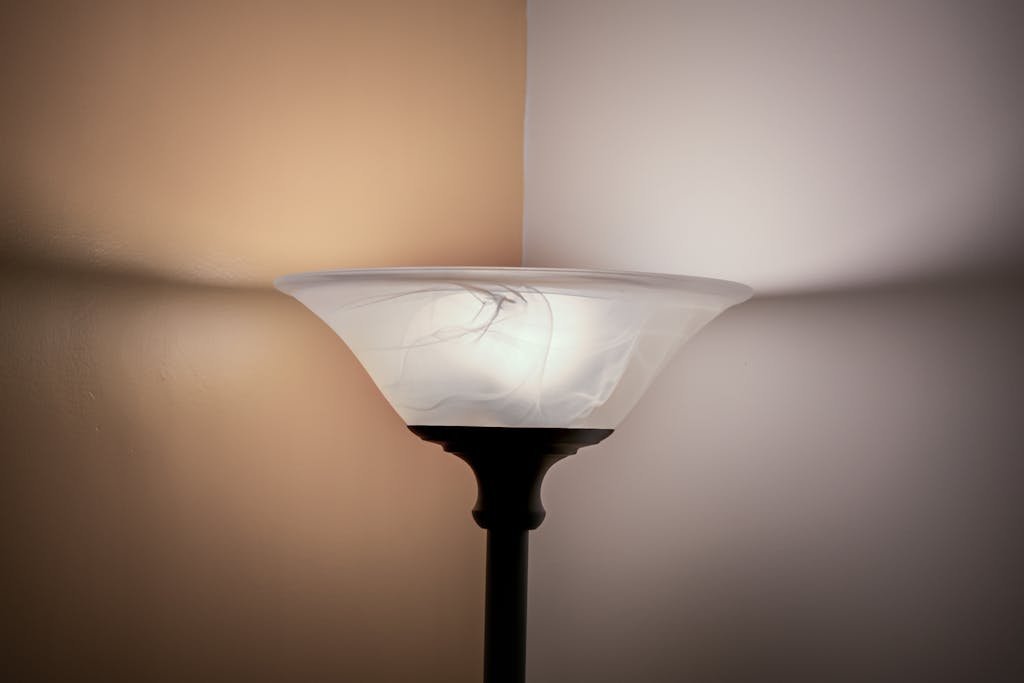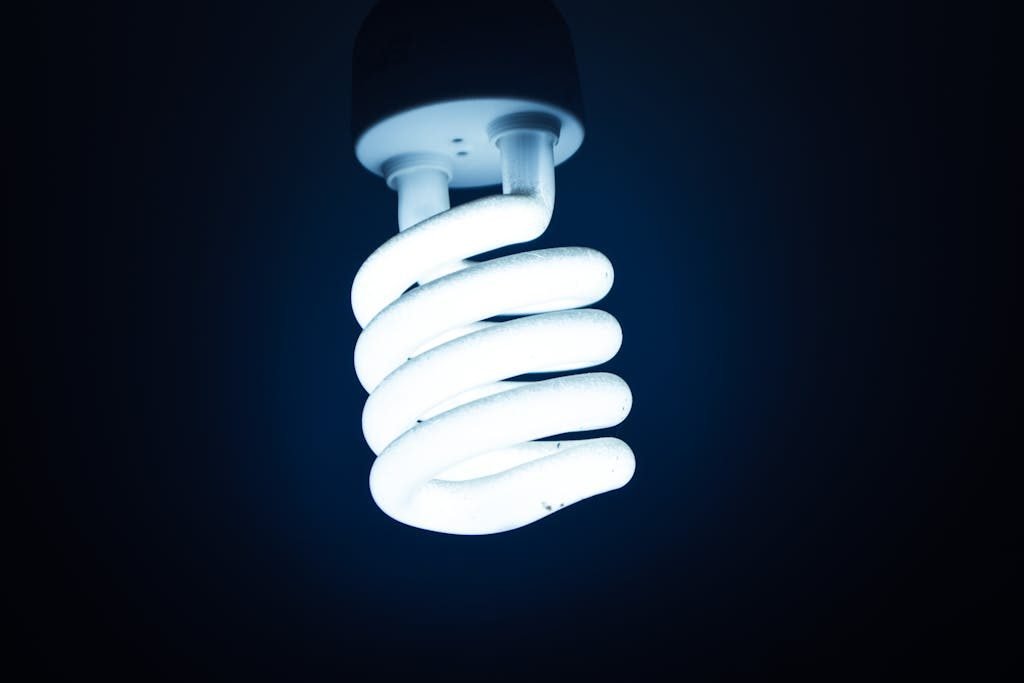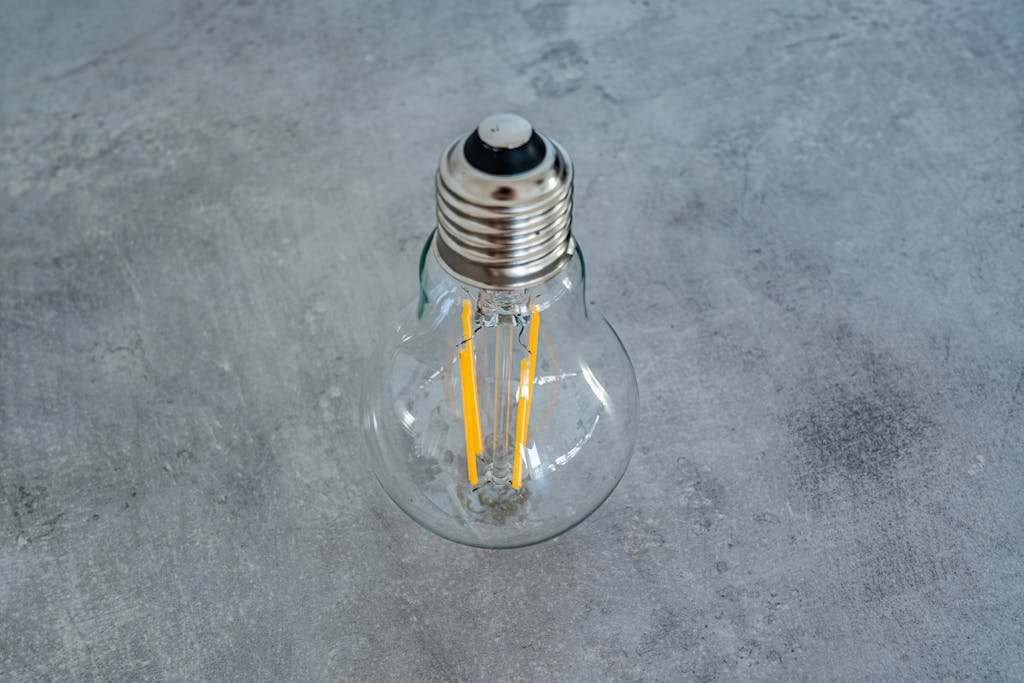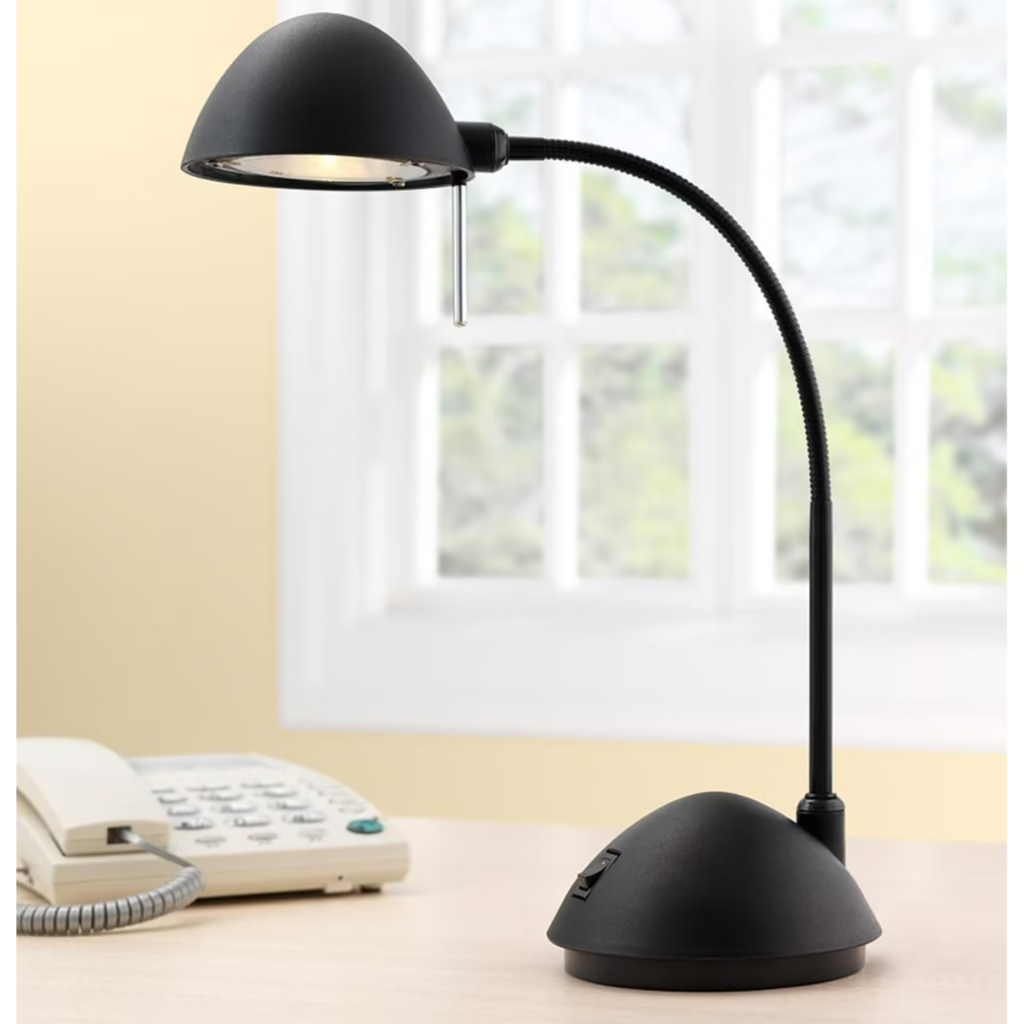Household Tips for People with Low Vision
Household Tips for Main Areas of the Home Living Areas – Indoors and Outdoors
Lighting
• Even levels of light both inside and outside the home will make it easier for your eyes to adapt from one space to another. For example, entering a dark house on a sunny day can cause temporary blindness, but a well-lit foyer will make it easier for your eyes to adjust to the change in light levels.
• Outdoor paths and walkways should be well lit at night.


• Light all stairs well, particularly the top and bottom steps. For interior stairs, install a 3-way switch so you can turn the light on and off from either direction.
• Have a lamp with a flexible neck by a favorite chair for reading or close-up work.
• Install dimmer switches or use 3-way bulbs for controlling the amount of light in the room.
• Use several fixtures to light a room to even light levels and minimize glare. For general room lighting, select lamps that provide light over a broad area.
Color and Texture

• Contrast switch plates with the wall color or use lit switch plates.
If this is not possible, highlight existing outlets with colored paint or tape. use high contrasting colors such as orange, yellow, black, and white.
• Use color to enhance your ability to see important objects or areas. For example, to help avoid a fall, paint your doorsills white if your flooring is dark, or outdoors, add brightly colored flowers along the walkway to the front door.
• Use a variety of textures, such as Velcro, rubber bands, and raised dots to help identify edges, objects, or controls within the environment. For example, they can be applied to the on/off controls on appliances, at the end of a banister, or on medicine bottles.
• Apply large-print labels using large black typeface on a white background or vice versa.

Furniture
• Eliminate low furniture that is easy to trip over such as coffee tables and footstools.
• Move furniture against walls to create a large area of uncluttered space in the center of the room. However, if you are rearranging a room for someone else, discuss it beforehand with that person.
Many individuals rely on specific location of furniture to find their way around a room.
• It is easier to see the sofa or chair when its color contrasts with that of the flooring. Choose a fabric that contrasts with the floor material or use a bright colored piping along the edges of the seat cushion.
• Reduce glare on polished furniture by covering it with a large doily or tablecloth.
Flooring
The following suggestions can help reduce the risk of a fall:
• Repair or replace torn carpet because a foot, cane or walker can easily get caught.
• Remove area carpets or throw rugs, especially if your loved one has a shuffling gait or uses a walker.
• When rugs or carpeting cannot be eliminated, place non-skid padding under rugs or secure to floor with double-sided tape.
Area
carpets without padding or tape can easily buckle underneath when walked on, causing a person to slip and fall.
• Use only matte, non-shiny finishes on the floor.
• Doorsills can be tripping hazards. Remove them whenever possible or paint them in a contrasting color.
Window Treatment
• To reduce glare, hang sheer curtains, blinds, or light filtering shades, or good-quality solar window films that maintain privacy but allow light through.
• Paint or apply tape in a bright color on the wand or knob controls.
Stairways

• Install a handrail, painted a different color than the background wall, on both sides of the stairs.
• Since many individuals have problems with depth perception, mark the edges of steps with a 1 – 2 inch strip of bright paint or reflective tape, especially the bottom step, where many falls occur.
• To help locate the bottom step, place a strip of Velcro at the end of the handrail.
Kitchen
• Install fluorescent lighting under the upper cabinets.
• Outline the edge of the countertops with colored plumber’s tape or paint in a color that contrasts with the work surface.
• If you have glaucoma and experience tunnel vision, remove cabinet doors or replace with sliding doors.

• Mark common or important settings on appliances (such as on/off, 375 degrees) with bright nail polish color or raised bump dots.
• Purchase large-print cookbooks and a timer with large numbers.
• If reading large-print labels is difficult, purchase a microwave with a sensor reheat feature, which automatically reheats the food to the appropriate temperature.
• Choose the colors of your kitchenware to contrast against the background color. For example, use forest-green dish towels against a white counter.
• White cups for coffee or black mugs for milk, white chopping boards for carrots and black chopping boards for onions
• Place rubber bands around the milk carton so it can be distinguished from the juice carton.
• Use dinner plates with a raised lip – ideally color banded around the edge – and differently colored than the table on which they are placed.
• Use an automatic coffee maker that makes a single cup of coffee eliminates the need to pour boiling liquids and risk burns.
• To avoid overflows when pouring liquid into a cup, use a “liquid level” indicator that hooks onto the cup’s edge and plays a tune once the liquid reaches ¾ inches from the top.
Bathroom
• Use bright tape to outline the toilet paper dispenser, the rim of the tub, and edges of the counter or vanity.
• Select a toilet seat that is a different color than that of the floor color.
• Choose a brightly colored tub mat.
• Replace clear glass light fixtures or ones with exposed bulbs with fixtures that shield the bulbs.
• Color-contrast grab bars and towels from the background wall.
• Choose soap and shampoo that have colors that contrast from those of the tub and sink areas.
• Add a waterproof light in the shower or the tub.
• Use illuminated wall plates.
• Put automatic night-lights in the pathway from the bedroom to the bath or install a dimmer switch and leave lights on low.
• Hang a magnifying glass near the medicine cabinet that can be used to read labels.
Bedroom
• Choose a bright bedspread that contrasts with the floor or sew a colorful ribbon around the edge of an existing spread to help distinguish the edge of the bed from similarly colored flooring or carpeting.
• Use a talking alarm clock or one with very large numbers.
• Add lights in the closet that automatically turn on with the door is opened. Arrange clothes according to color.
• Install a light switch, table lamp or an automatic nightlight by the bedroom door so you never walk through a dark room.
• Have a lamp that can be turned on/off from the bedside.
• Hang sheer curtains or blinds on windows to reduce glare.
• Attach contrasting molding or colored tape to furniture edges.
Frequently Asked Questions on Lighting
Do people with low vision need higher levels of lighting than people with normal vision?
Vision specialists offer general guidelines on the amount of light a person needs, depending on the type and severity of vision loss.
General guidelines:

• People with macular degeneration almost always require much higher light levels, especially for reading and close-up work.
• People with glaucoma usually benefit from higher light levels.
• Less light may work better for those with central cataracts (cortical or subcapsular).
People with the same type of low vision, however, can respond differently to varying light levels, so you should experiment with different types of bulbs, wattages, and lamps to find out what is most comfortable for you.
The quality of light is just as important as the quantity. An overly bright room, a bright light in a dark room, or exposed bulbs in a chandelier will cause discomfort for most people with low vision.
That is why just replacing low wattage bulbs with higher wattage bulbs will not work if it also increases glare.

What is glare and how do I control it?
Glare results when light shines directly into the eyes or reflects off polished surfaces such as tabletops and floors. Glare is a problem for many people; it not only causes eye discomfort, but it also interferes with the ability to see. Glare can be controlled by covering windows with blinds, window films or drapes, covering bulbs with lamp shades, using even levels of light throughout a room, and using only matte, not polished, finishes on furniture or floors.
In many homes, the bathroom is “Glare Central.” The problem is particularly acute when you enter a brightly lit bathroom from a dark hallway or other dim environment.
There are some simple steps you can take to reduce glare in any room:
• Install dimmer switches.
• Clean but do not polish floors and other surfaces; avoid using wax on the floor; use a flat finish.
• Consider replacing harsh-glare surfaces with softer ones-carpet instead of tile, wallpaper instead of enamel, etc.
• In places where glare is unavoidable, use sunglasses, large brimmed hats, umbrellas or visors.
• White sheet paper can produce a harsh glare-to make reading easier, try placing transparent yellow acetate sheets over white pages.
• Sunlight can fill a room with light without producing glare.
• Mini blinds are excellent window coverings because they can be adjusted during the day to eliminate glare.
• To make the television easier to see, simply turn the screen away from the sun or a lamp so the light source is behind the
screen.
What are the best lamps or light fixtures to use for people with low vision?

There are many kinds of lamps to choose from, depending on whether you need general “walking around” light or close-up, task lighting.
1. For general lighting to light a room, choose:
• Tall table lamps with light-colored shades and wide brims at the bottom.
• Regular floor lamps or “torchieres” with fluorescent bulbs (floor lamps that direct light toward the ceiling).
• 3-way bulbs to offer flexibility in light levels.
2. For close-up task lighting aimed directly on an object, such as a book or needlepoint, invest in a quality lamp with:
• A flexible neck that allows you to move the light down close to your task. The placement of the task lamp is critical. To reduce glare, make sure the bulb is below eye level.
• An internal reflector (a double shade) to reduce the heat. These lamps are more expensive but reduce the heat significantly, allowing you to sit more comfortably when the lamp is closer to you.
Be cautious about purchasing an inexpensive task lamp. Users complain that:
It is harder to position the light exactly where it is needed.
More glare is created because heat-venting slots on the shade allow harsh light to shine through.
What Light Bulbs are Best for Low Vision Lighting?
Use the brightest light bulbs recommended for each light fixture.

There are several different kinds of light bulbs.
Fluorescent
Although they provide the brightest light, fluorescent lighting usually causes the most glare.

Halogen
Halogen bulbs cause less glare, but they can be too hot for some lamps. Just like the fluorescent bulbs, halogen bulbs can only be used in halogen lamps.
LED Lights
Provide bright, cool lighting and the bulbs last for thousands of hours
Full Spectrum Lighting
However, some eye specialists warn against using full spectrum lights because it contains blue light which is known to cause damage to the retina.
The Brightness of bulbs:
The brightness of the bulb is measured in Lumens. The higher the Lumen the brighter the light.
Colour temperature
Light bulbs come in a variety of colours, or light temperature.
This is measured in Kelvin. The lower the K, the warmer or yellower the light will appear: the higher the K the cooler or whiter the light will appear.
For areas where ambience is the priority, such as living rooms and dining rooms, warmer light temperatures are often preferred. Where function is the priority, choose higher light temperatures instead.
The need for light is greater because of the degeneration of rods and cones in the retina. In fact some eye specialists state that those with AMD need four times more light than those with normal vision.
It is important that you use an adjustable or a gooseneck lamp so that the light can be directed onto your reading material or your hobby. Position the light so that it is directed or aimed right at your project or reading material. Often with better illumination the need for magnification is less.
Halogen Desk Lamp

Peggy Wolfe the author of Macular Disease: Practical Strategies for Living with Vision Loss suggests “Look for a lamp that comes with a halogen bulb if you want really strong light.” Dan Roberts writes about his favorite low vision lighting at his desk; “For near-vision tasks, we placed white halogen lighting at my desk…”
A halogen desk lamp provides bright task lighting for those with macular degeneration. Halogen bulbs are brighter than regular incandescent or LED light bulbs which is why many people with macular degeneration (AMD) prefer these bulbs for their task lighting – for doing things like reading bills, writing checks and performing hobbies.
Many people find that this type of lighting also enhances contrast. Please be aware that halogen desk lamps can get very hot. The instructions will tell you not to leave the lamp unattended and do not place it near anything that is flammable.
You may have to experiment to find the type of light that works best for you.
LED Adjustable Desk Lamp
With a rotatable base, neck, and head, you can adjust this LED desk lamp for ideal lighting from virtually any position.
Gooseneck Floor Lamp
A gooseneck floor lamp can be placed next to your favorite reading chair or close to your bed for better lighting while reading.
This lamp uses a crisp white LED lighting which means you’ll probably never have to replace the light bulb. The benefit to this type of bulb is that it doesn’t generate heat and stays cool to the touch.
Swing Arm Desk Lamp
Light that can be directed onto your reading material or hobby will help you continue to do the things you enjoy. Either an adjustable arm or a gooseneck will make it possible to position the light in a way that brightens up your reading page or task.
Less magnification is needed when task lighting is used. The closer the light is to the object or material the better the illumination. The farther the light is from your task, then you’ll experience less lighting and lower visibility. A few inches can make a big difference.
Flashlights and Motion Sensing Lights
There is nothing like taking “light” with you wherever you go. Take a pen flashlight with you to help read a menu in a dark restaurant, check the buttons on the microwave or to find an outlet for a plug.
Undercabinet Lighting:
Use multi-purpose LED lights as under cabinet lighting, for closets, attics, sheds, garage, armoires, autos, emergencies, or anywhere else.
They are available on Amazon or in your local DIY store, examples of which would include:
* Commercial Electric LED Portable Task Light from Home Depot
* LED Night Light, Kasonic 200 Lumen Cordless COB LED Light Switch: Amazon
* Under Cabinet Lights 78 LED Motion Sensor Lights, or even wireless LED Motion Sensor Lights: Amazon.
Magnifying glass with light:
Use a magnifying glass with LED lights to bring light and magnification to your printed material.
Change out your near vision lighting to lamps that can be adjusted and directed onto your task and add additional light to dark areas such as under cabinets, near stairs or unlit corners of your house.
RECAP OF HELPFUL HINTS

• Put the light directly where it is needed. Use small lamps that swivel and can be raised or lowered to help direct the light.
• Direct the light over the shoulder of the eye with the best visual acuity or use lampshades that direct light onto a specific area rather than out into the room.
• Wire your overhead fixtures to a dimmer switch to increase the amount of light in a room.
• Position lamps near frequently used appliances. Under-cabinet lighting provides task lighting in the kitchen or work areas.
• Provide extra lighting in stairs and hallways where it can be difficult to move around.
• Pay attention to lighting access and control, making sure that switches are located where they can easily be found.
• Contrast switch plates with the wall color or use switch plates that contain small lights.
• Consider pre-set light timers for difficult areas.
Credits:
Household Tips for People with Low Vision By Rosemary Bakker, MS, ASID http://studylib.net/doc/8106229/household-tips-low-vision—environmental-geriatrics
visionlighting.html ;https://www.macularsociety.org/support/practical-
guides/home/lighting/








One Comment